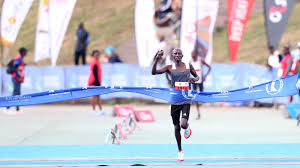More than 300 participants from across Africa are meeting this week in Kenya, to discuss ways of tackling the African Trypanosomiasis, commonly known as sleeping sickness or Nagana.
The disease claims over 50,000 lives annually, while over 65 million people in Sub-Saharan Africa are currently at risk of contracting it.
The participants will be meeting during the five-day 36th General Conference of the International Scientific Council for Trypanosomiasis Research and Control (ISCTRC) hosted in Mombasa.
The conference will unite stakeholders from over 38 tsetse-infested African Union (AU) Member States, encompassing disease control workers, scientists, researchers, and key representatives.
This disease detrimentally affects both human and livestock health, limits land use, and perpetuates poverty, posing a substantial barrier to the continent’s growth and development.
The relentless fight against the disease is driven by the International Scientific Council for Trypanosomiasis Research and Control (ISCTRC), a vital arm of the African Union Commission.
“International organizations expected in the meeting include: Food and Agricultural Organization (FAO), the World Health Organization (WHO) and the International Atomic Energy Agency (IAEA) . ICIPE, FIND, DNDi and Regional Economic Communities as well as the private sector players will attend the meeting,” the African Union-InterAfrican Bureau for Animal Resources revealed.
According to AU-IBAR, Trypanosomiasis occurs over 10 million sq km in 38 countries. About 2,804 human cases were reported in 2015.
“About 50 million cattle are at risk with 35 million trypanocide doses used and 3 million deaths of cattle reported annually. Agricultural production loss due to trypanosomiasis is estimated at US$ 5 billion per year,” the Bureau said.
The ISCTRC Conference aims to facilitate the exchange of information on tsetse, human, and animal trypanosomiasis.
It further seeks to review existing control strategies and suggest appropriate research and control approaches.
The conference further promises to be an enriching and collaborative event, fostering an exchange of knowledge, expertise, and strategies to combat trypanosomiasis and its impacts on Africa’s development.
To ensure that the disease is eradicated, Kenya as the host country continues to create awareness through information sharing.
Scientists continue to review control strategies while recommending appropriate approaches in research and control.
ISCTRC, which was established in early 1960s, is hosted by AU-IBAR in Nairobi, Kenya, with its membership coming from African Union Member States, the African Union Pan African Tsetse and Trypanosomiasis Eradication Campaign (AU-PATTEC), and international organizations such as FAO, WHO, and IAEA.
ISCTRC has played a pivotal role in disseminating knowledge and promoting research and control strategies for tsetse and trypanosomiasis through its General Scientific Conferences since 1949.
“These conferences serve as platforms for sharing insights, reviewing control strategies, and recommending effective approaches to research and control,” AU-IBAR said.
At the end of the conference, the Council will adopt recommendations guiding research and control of tsetse and trypanosomiasis for the next two years.
The conference’s outcomes are expected to significantly improve livelihoods across the continent, particularly in regions heavily affected by tsetse and trypanosomiasis.

























































